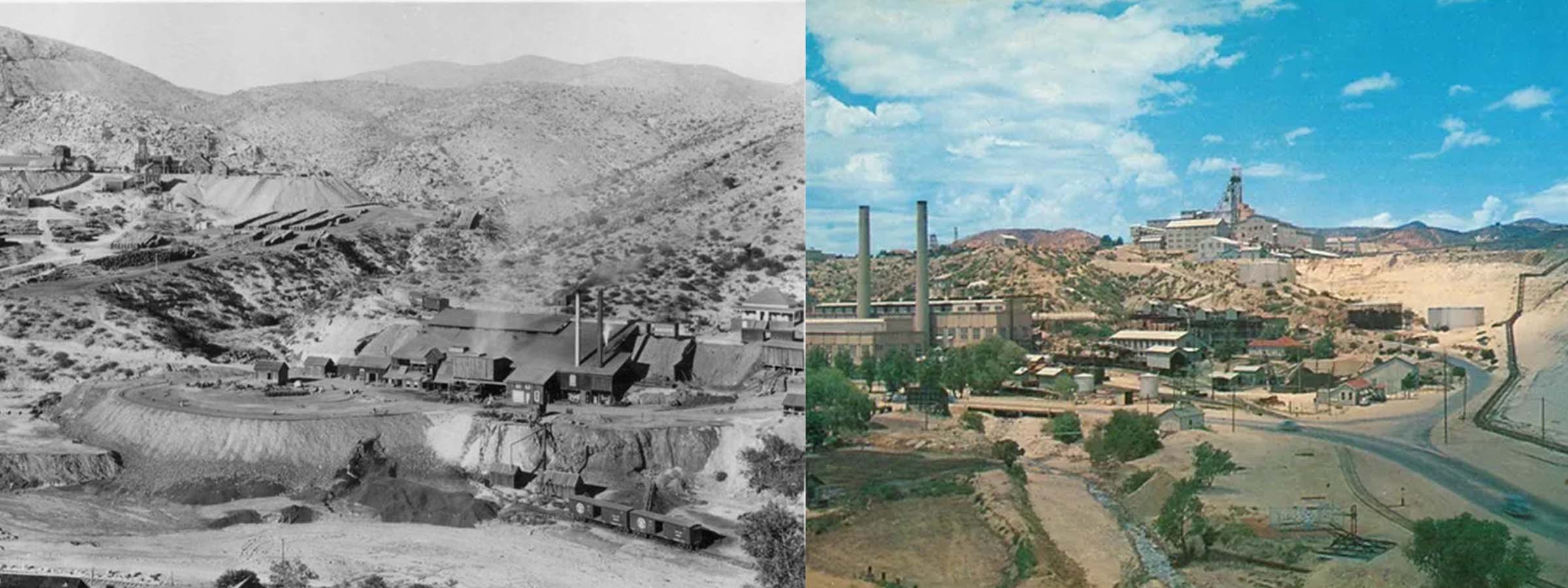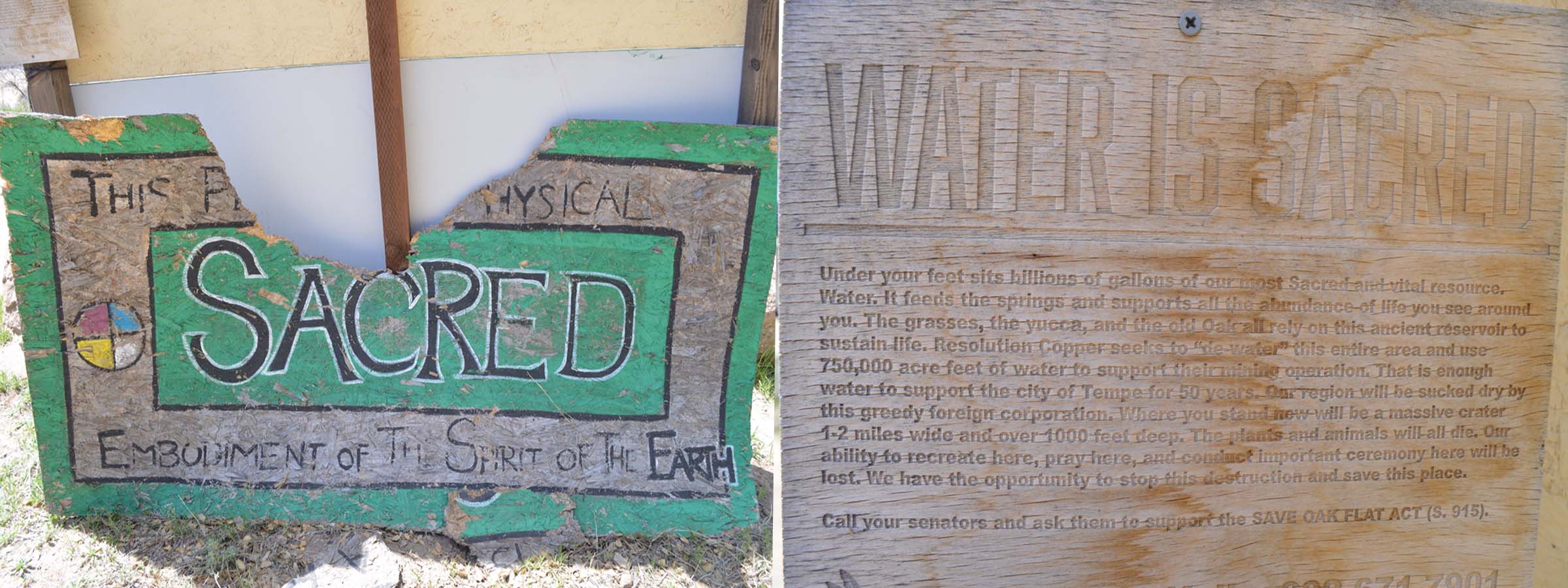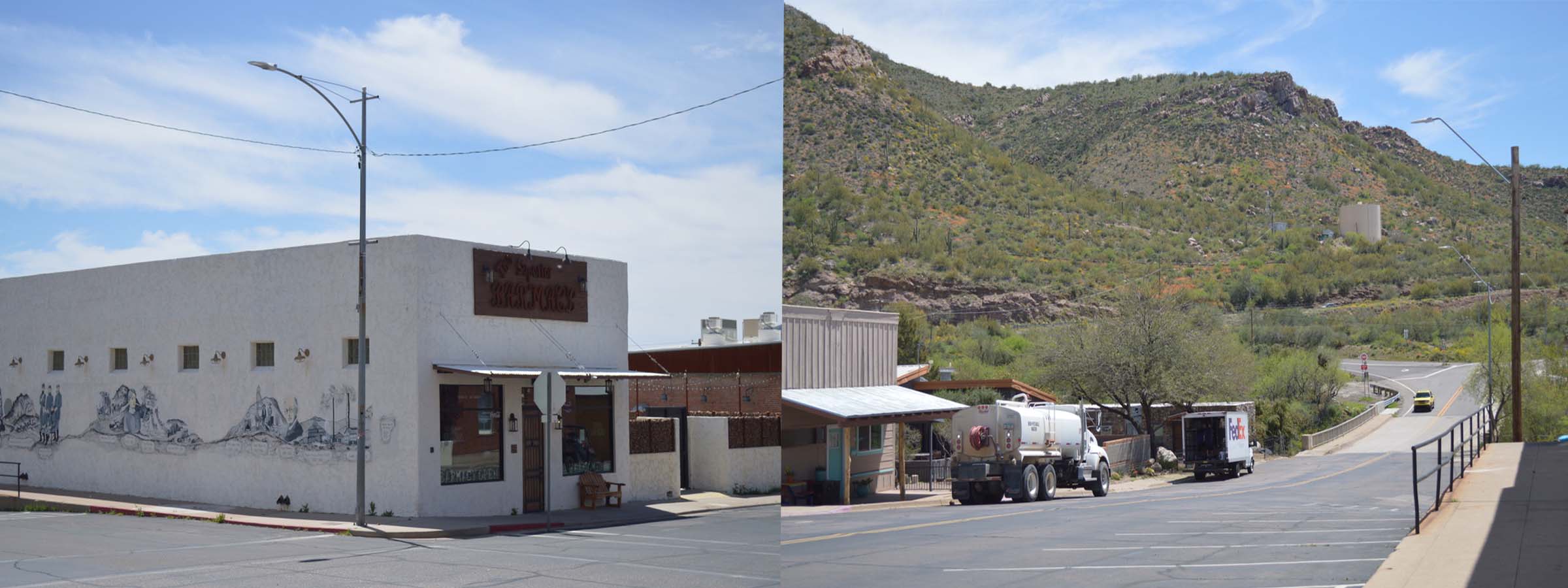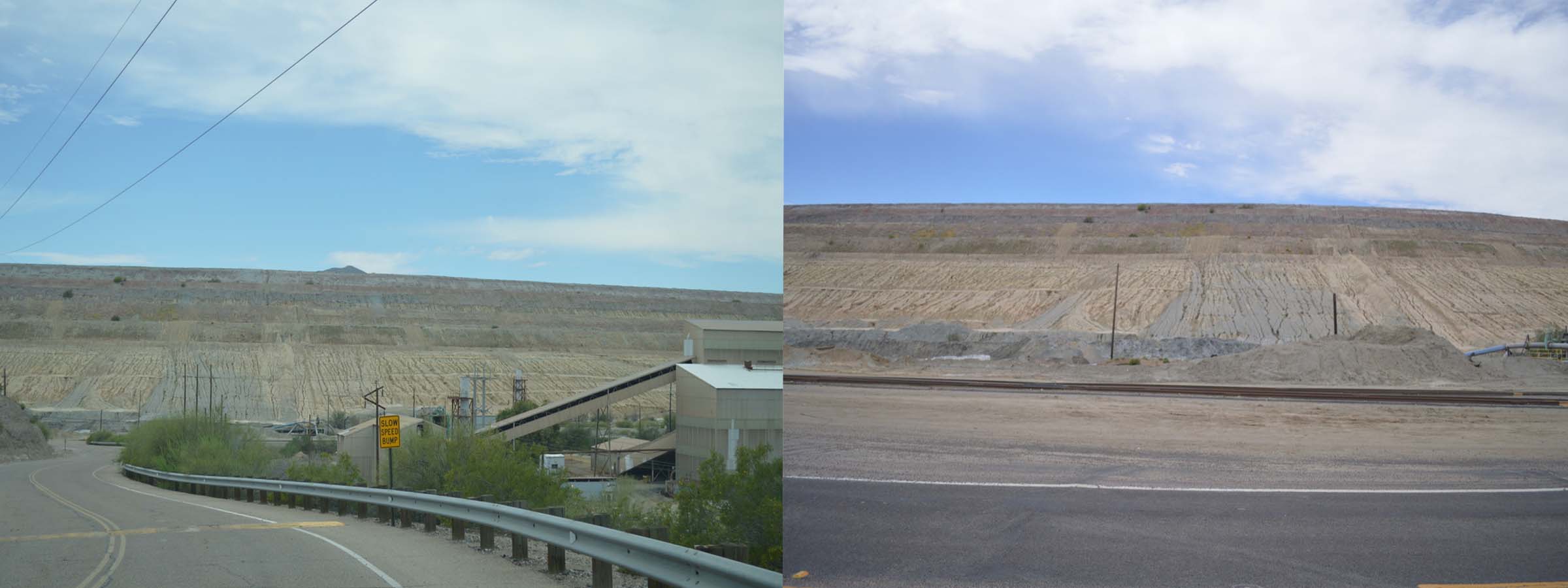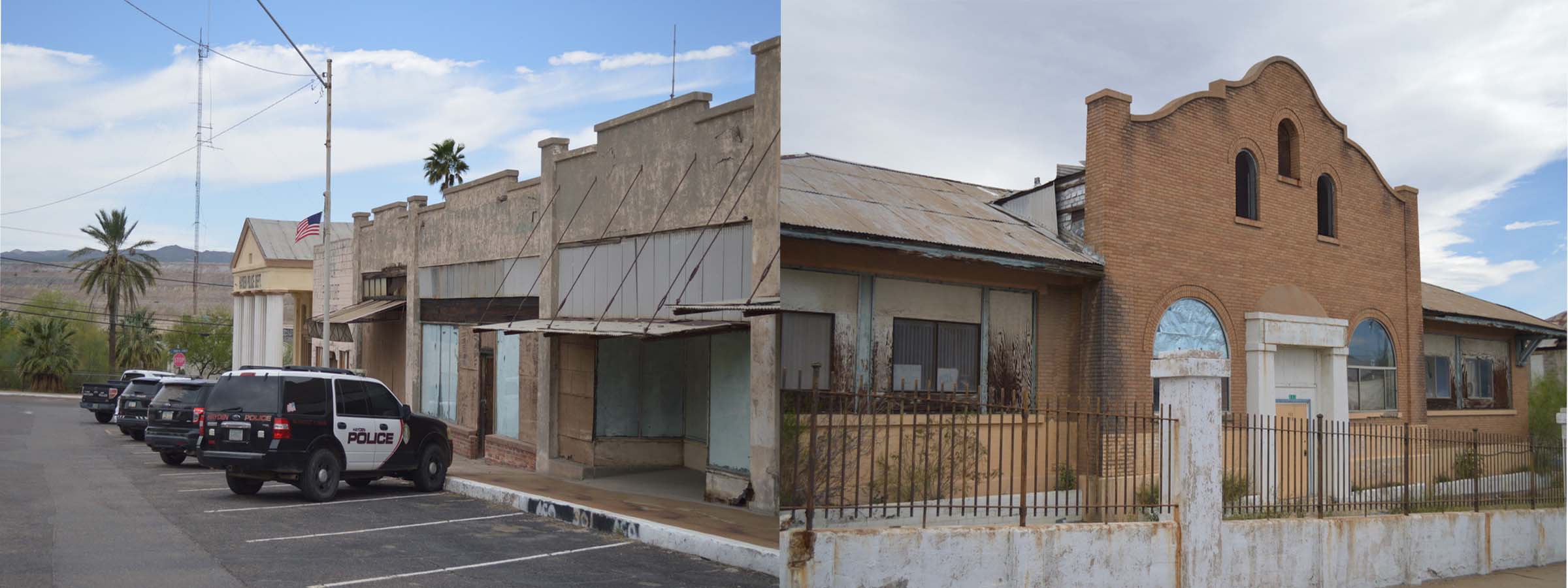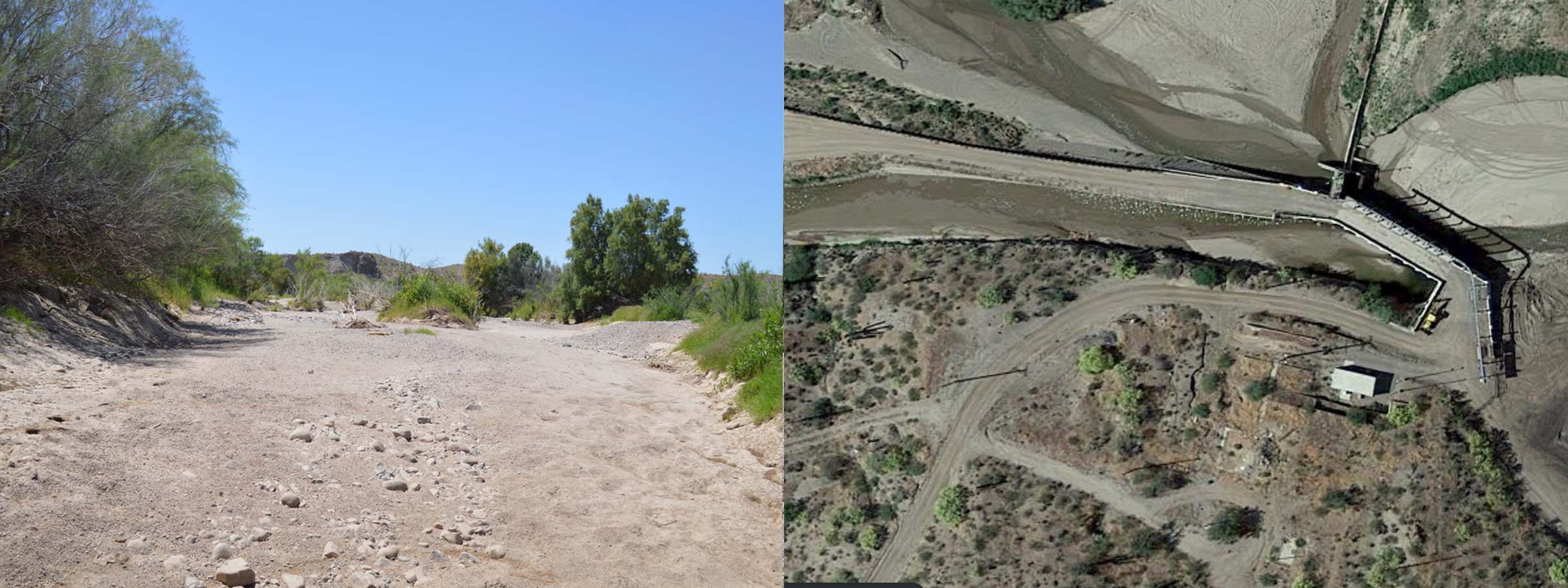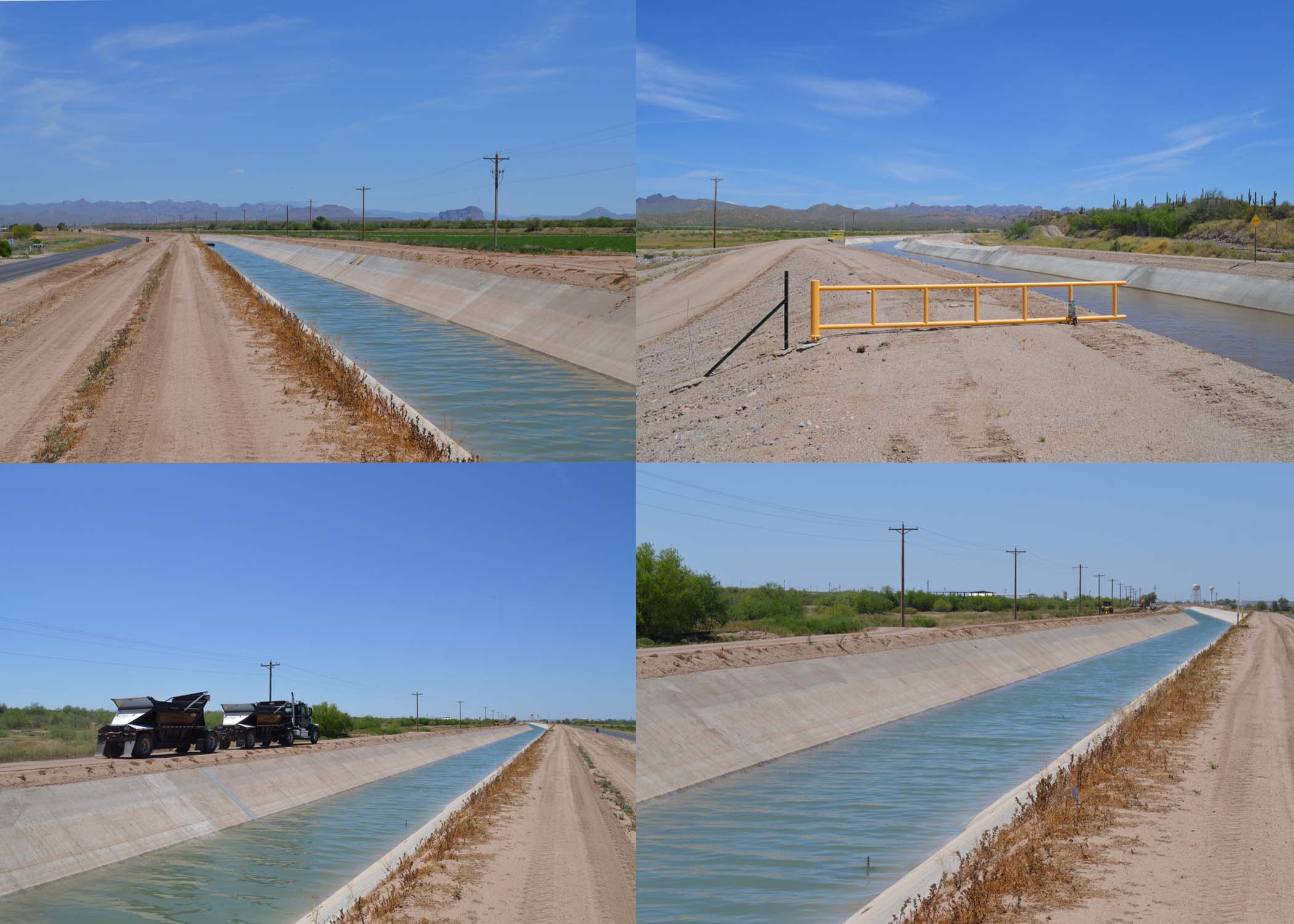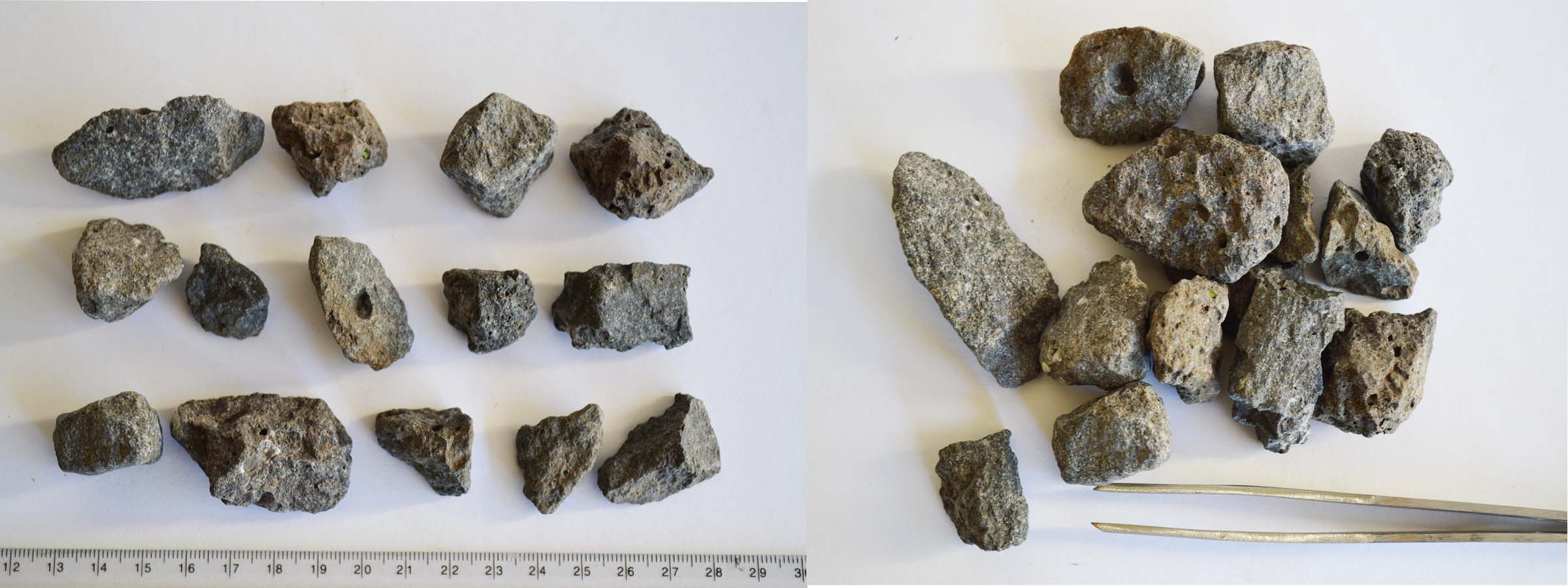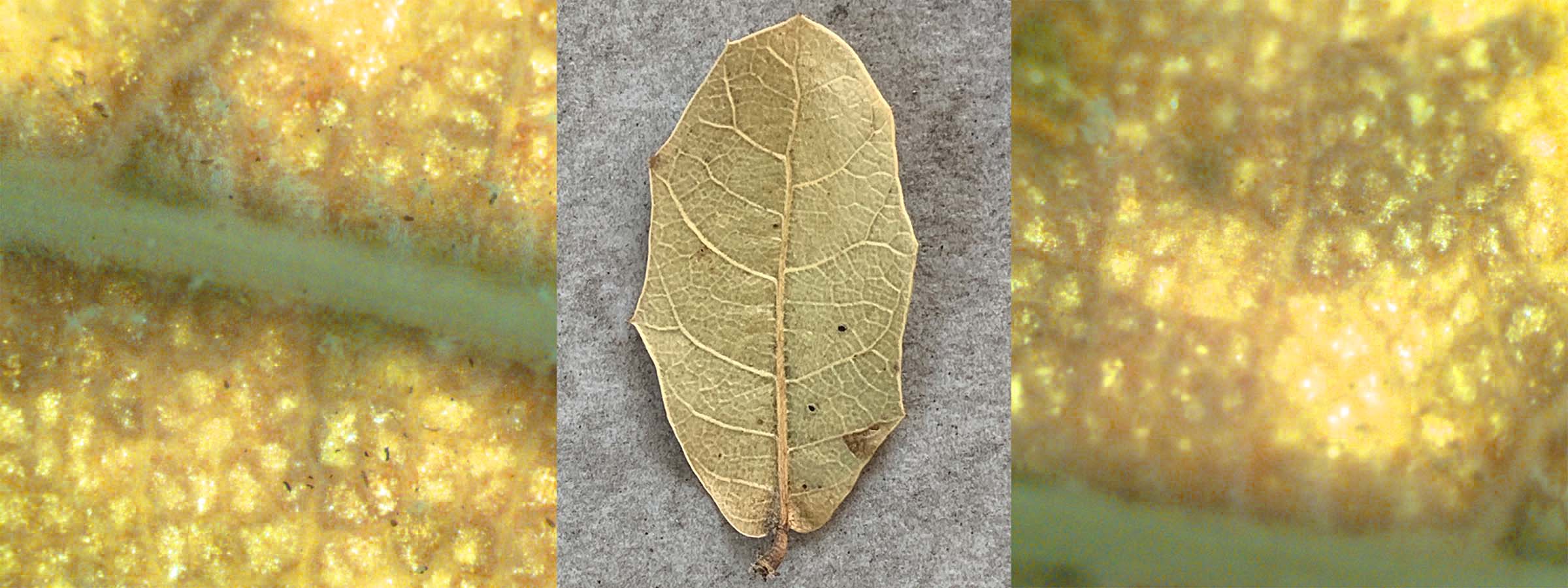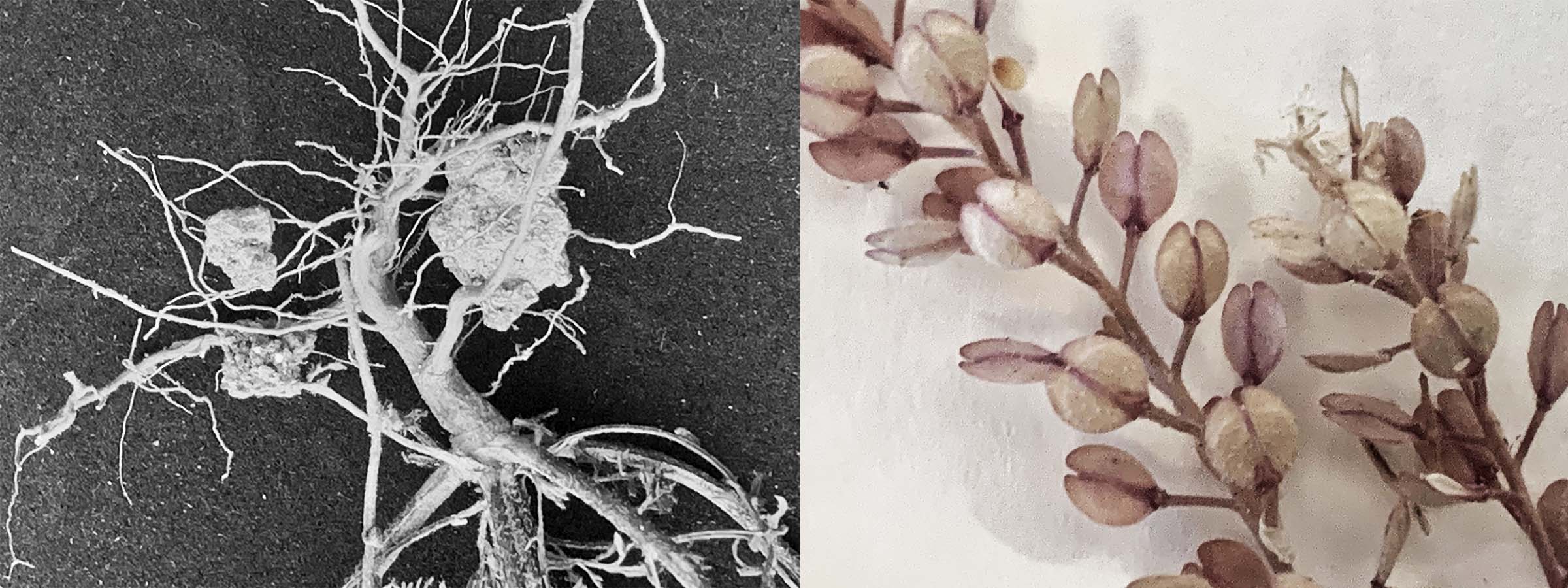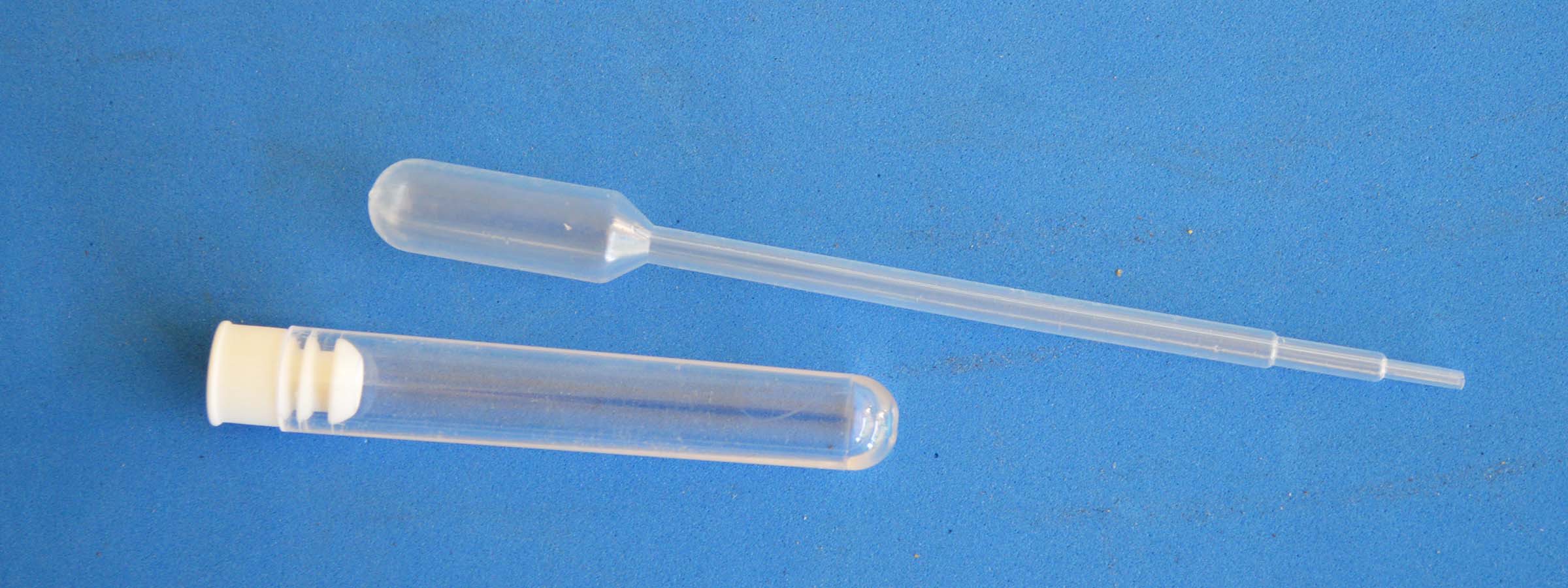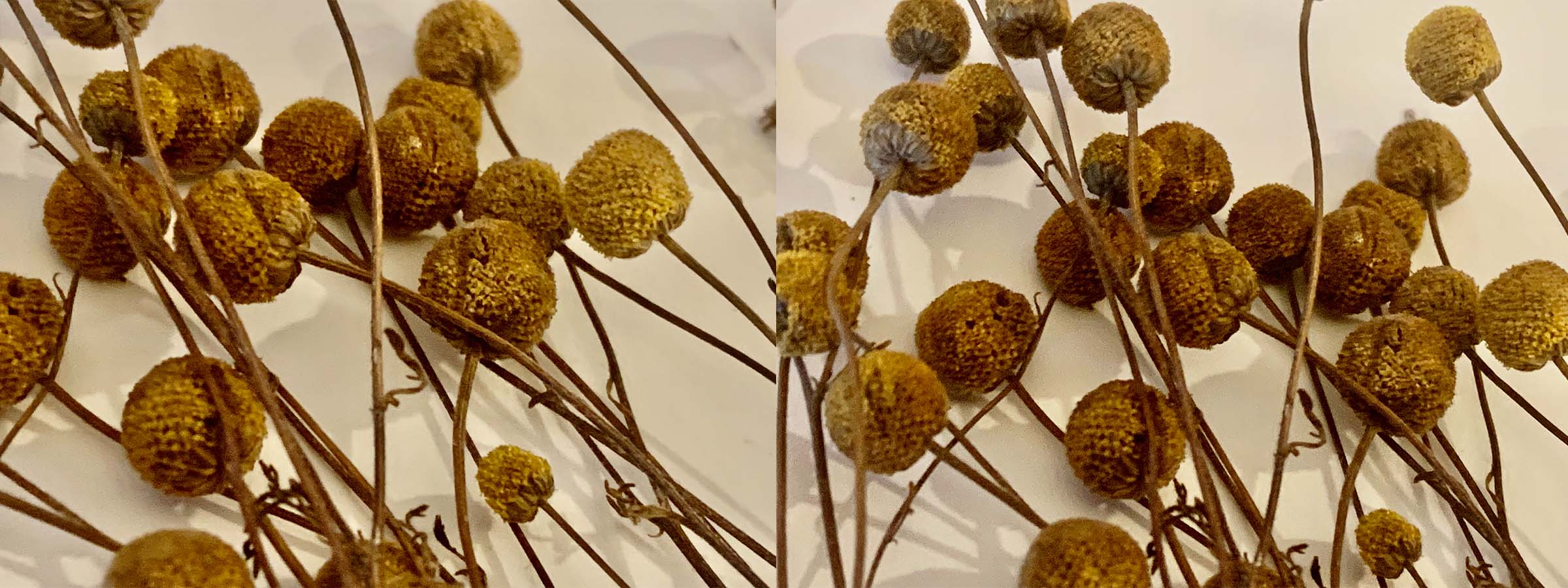The Corridor
As the Gila flows west to the town of Florence, it bisects an area known as the ‘copper corridor’ through Walnut Canyon. The northern towns of Miami/Globe and Superior are situated in the Pinal Mountains and sit on some of the largest copper reserves in the US, and between them is Oak Flat, a sacred Apache ground. To the south, the Gila flows past the mining towns of Hayden and its sister communities. Because The Gila River is part of a vast watershed draining an area of nearly 60,000 square miles, the allocation of water resources in these locations is shared by agricultural, industrial, and residential use.
Along the copper corridor, the current and past history of each town, is intimately linked to the copper industry. With limited water available, the mining industry is in competition with farming or ranching communities. When copper prices are high, mining towns enjoy development and prosperity. The effects of flooding, fires, massive strikes, mining accidents, and depleted copper reserves can devastate towns, and may be abandoned by the corporation in control of the mines. Yet the promise of economic benefits for future mining investment continues to drive community interest in granting water rights to international corporations. Difficult choices.
